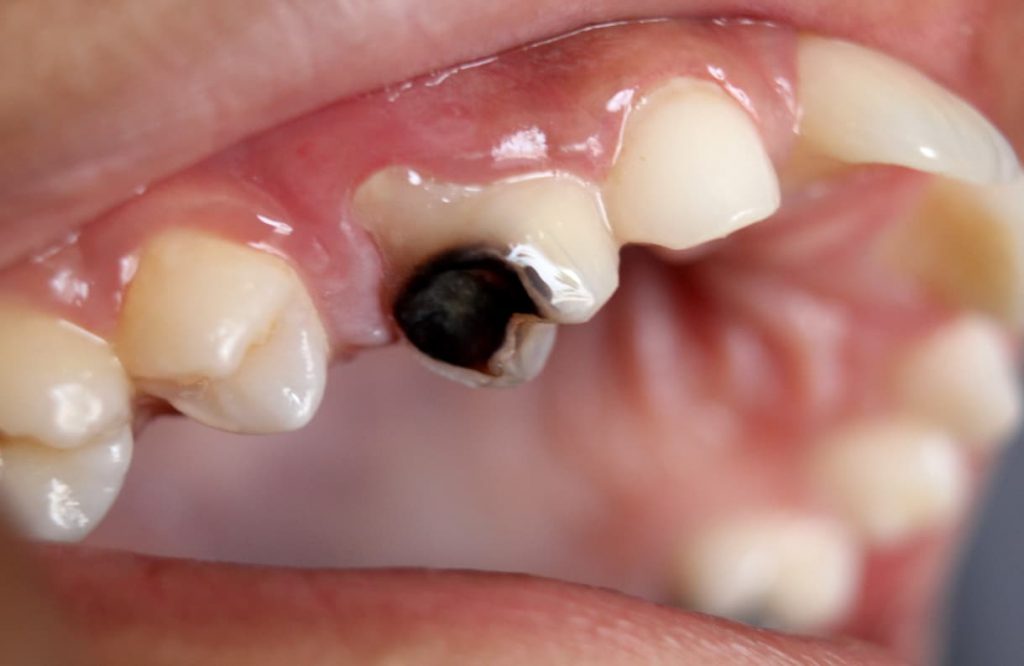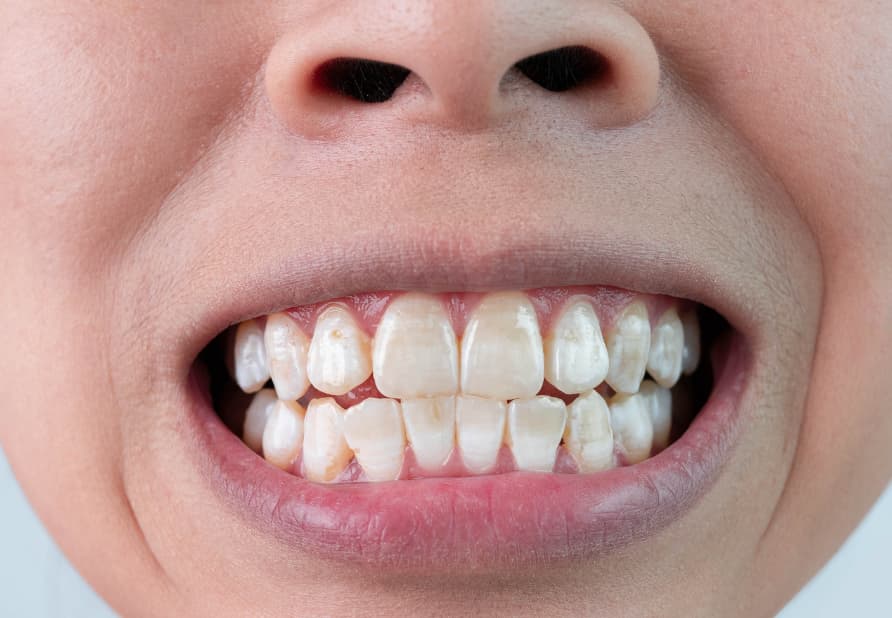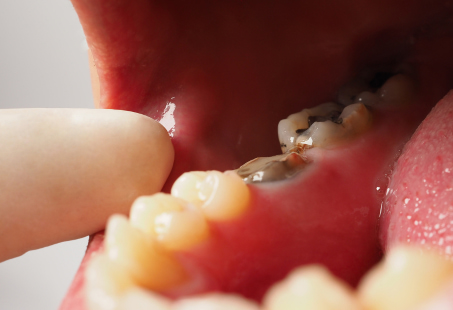Many children grow up hearing about toothworms and cavities. It is, after all, the most common health problem, affecting as much as 50% of the global population, according to the World Health Organization (WHO).
Tooth decay not only looks bad and may even be a cause of embarrassment, but it can also cause very serious problems by breaking a tooth down. The holes in the tooth can make you more susceptible to an infection and can make you lose your entire tooth as well.
Of course, that’s an expensive treatment in and of itself. But the replacement of the lost tooth can also cost you quite a lot. Fortunately, despite their prevalence, cavities are not inevitable. You can prevent them by having an understanding of their risk factors. In this guide, we’ll take a closer look at cavities.
What Is A Tooth Decay?
Tooth decay is an oral health disease that damages the tooth and can lead to the formation of cavities (holes) in it. For a long time, it was believed that decaying teeth were caused by worms eating their insides.
While there are no parasitic organisms squirming inside the teeth, your mouth is filled with loads of other microorganisms, from bacteria to viruses and fungi. There are 700 species of bacteria alone there. And both fungi and bacteria have been implicated in the decay of the tooth.

In fact, according to a study published in the Proceedings of the National Academy of Sciences, these tooth decay-causing bacteria and fungi can even come together to form a “superorganism.”
And what’s unusual about this creature is that its limbs that allow it to spread to the surrounding teeth, worsening the problem of tooth decay.
It’s also worth noting that the teeth of children are more vulnerable to getting decayed. Research published in InformedHealth.org reports that the milk teeth enamel is more sensitive.
In general, children can be put at risk of tooth decay because it’s more difficult to maintain oral hygiene at that age. They further report that even when the permanent teeth are erupting, you have to be careful because the enamel is not fully formed yet.
How Does Tooth Decay Occur?
A bacteria called “Mutans streptococci or Streptococcus mutans” is considered the main cause of tooth decay, and it’s aided in efforts by none other than sucrose (what you’d be more familiar with as table sugar).
This bacterium is believed to break down sugar in order to obtain energy from it. However, as a result, it also produces an acid that changes the pH of the mouth, with the acid damaging the enamel of the tooth. You don’t instantly form holes or cavities in your teeth.
You might first notice white spots on your teeth – early signs of tooth decay. And at this point, it’s still possible to undo the damage done to the teeth.

However, if there’s no intervention and the demineralisation process continues uninhibited, you’ll end up with cavities on your teeth. At this stage, the tooth decay has been irreversible.
And once the enamel is damaged, the bacteria gets access to the inside of the tooth. Research published in the International Journal of Dentistry reports that after the enamel, the acids dissolve the dentin. Bacteria then enter the pulp – the centre of the tooth – leading to an infection.
Keep in mind that the acid-producing bacteria come from plaque – a sticky colourless film, which gives the teeth a fuzzy feel. It forms constantly, and you need to get rid of it.
Otherwise, within 1-3 days, the plaque can harden to form tartar. And that can cause other problems like gum disease.
What Are The Stages Of Tooth Decay?
Going by the way tooth decay develops, the following stages have been identified:
- Loss of minerals from the tooth
- Formation of holes or cavities in the enamel
- Dissolution of the dentin (decay occurs more quickly due to relatively less mineralisation)
- Damage to the pulp and infection

The colour of the tooth also changes at the different stages of tooth decay. As reported in a study published in Human Organization, white spots are indicative of early stages of cavity lesions.
On the other hand, the later tooth decay stages are associated with dark brown and black colours. Of course, the further down the steps of tooth decay, the more problematic things will become for you.
What Are The Symptoms Of Tooth Decay?
Beginning from white spot lesions, you might not experience any symptoms of tooth decay at that stage. However, as it goes deeper, you may experience a number of tooth decay symptoms, including:
- Pain
- Sensitivity
- Swelling
- Tooth discolouration
- Bad breath
- Bad taste in the mouth

It’s important for you to keep an eye out for any signs of tooth decay. Caught early on (at the white-spot stage), you might even reverse the damage. However, if you continue to aggravate your condition and dismiss the symptoms of tooth decay, you can experience other problems like gum disease and very serious infections.
What Causes Tooth Decay?
Sugar is generally held as the main culprit behind tooth decay. The sugar, of course, makes it to the oral bacteria through the food you eat from things like:
- Candies
- Biscuits
- Chocolates
- Cake
- Doughnuts
- Jellies
- Juices
- Carbonated drinks
But sugar isn’t among the only causes of tooth decay that allows the bacteria in the mouth to thrive. If you aren’t removing the plaque around your teeth, that’s another reason why tooth decay will occur.

A study published in the Frontiers in Public Health also reported some other risk factors for the increased vulnerability to tooth decay, which are as follows:
- Stress
- Father’s low level of education
- Poor economic condition of the family
- Toothache in the previous year
- Poor oral health
- Less frequent use of toothbrush and floss
- Unhealthy body mass index (BMI)
Other reported risk factors of tooth decay also include frequent snacking, having a dry mouth (as saliva helps with tooth decay), a diet high in sugar, and not getting your teeth checked.
How To Stop Tooth Decay?
The course of action to stop your tooth decay will depend on how far along it’s progressed. While it’s still in its early stages, the National Institute of Dental and Craniofacial Research says that the enamel has the capacity to heal itself with the help of saliva and fluoride.
You must get yourself checked though, as your dentist might suggest you need fluoride treatment for the treatment for tooth decay.
However, if your enamel has been breached, restorations in the form of fillings are a common treatment option. In this, the dentist will first drill away the decayed parts of the tooth. After that, the hole is filled, hardened and polished as a part of the tooth decay treatment.

In case, the damage has spread to the inside of the teeth, you might need dental crowns and a root canal. But depending on how severe it is, the entire tooth might need to be removed as well.
In case of an extraction, your dentist might recommend replacing the tooth root with a dental implant. Therefore, the answer to how to treat tooth decay depends on how bad your condition is.
How To Stop Tooth Decay From Spreading?
To stop tooth decay from spreading, first and foremost, you must get in touch with your dentist. According to StatPearls, since plaque is the underlying problem, removing it can inhibit the progression of tooth decay. But keep in mind that if your plaque has hardened into tartar, at-home brushing won’t be able to help you. You need your dentist to remove it.
Another thing that’s recommended is to minimise the consumption of foods that are high in sugar as that’s what the oral bacteria is using to obtain energy. Using fluoride is also believed to help strengthen the enamel (from toothpaste and even in water that’s got fluorine).
Most importantly, you need to brush your teeth twice a day, for 2 minutes at least and make sure to floss. It might not seem necessary, but food can remain stuck between your teeth, and a cavity can form between the teeth as well (interproximal cavity).

Another thing you should do is simply get your teeth checked regularly. If there are any early signs of tooth decay, your dentist will catch it early on and help you stop the tooth decay from progressing.
Conclusion
Tooth decay is so common that you might not think much of it. However, the truth is it can turn into a very serious oral health problem, especially because it leaves the insides of your teeth exposed.
The tooth enamel is a hard protective covering. But if you allow the bacteria in your mouth to dissolve the enamel and then the dentin, the infection of the pulp can require more invasive treatments.
It will, of course, cost you more as well as you might also need a dental restoration to improve the function and aesthetics of your teeth. Tooth decay can also occur simultaneously with gum disease if you don’t remove the plaque around your teeth.
The good thing is that there are simple measures that you can take to avoid the development of tooth decay in the first place. But you should also get checked by a dental professional in the meantime to make sure things are actually okay.
Reviewed and approved by Dr Izbel Aksit
FAQ
Does tooth decay spread?
The bacteria that is responsible for causing tooth decay can be passed on from one person to another through saliva. For instance, children can get these bacteria from their mothers.
How long does it take for a tooth to decay?
The progression of tooth decay isn’t always linear or fixed. Tooth decay can happen in months or years. There are different measures that can help stop or even reverse a cavity (like good oral hygiene, use of fluoride, etc.), so there’s no one answer to this.
Can a decayed tooth be saved?
A decayed tooth doesn’t always need to be extracted. It can be conserved through treatments like fillings, crowns, and root canal therapy.
Can tooth decay heal?
In the early stages of tooth decay (white spot lesions), it’s possible to reverse the damage so it can heal. However, once holes form on teeth, they can’t be undone.
Can a decayed tooth fall out on its own?
It may be possible for your decayed tooth to fall out, especially if it also becomes loose due to accompanying gum disease. Some people also report having their rotting teeth fall out in smaller pieces. If you experience anything like this, make sure to get in touch with your dentist.
Can a tooth decay after a root canal?
You can still experience tooth decay after a root canal which can also cause an infection. So, if you feel something’s not right with your teeth, consult your dentist.
Does tooth decay hurt?
Toothache can be one of the symptoms of tooth decay, especially if the decay has progressed to the inner layers of the tooth.
Can tooth decay be reversed?
White spots resulting from tooth decay can be reversed. However, if you form a cavity, that’s not going to reverse itself. You’ll need treatment to get it covered.
